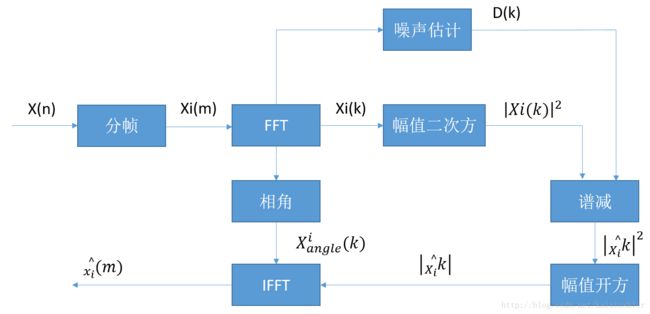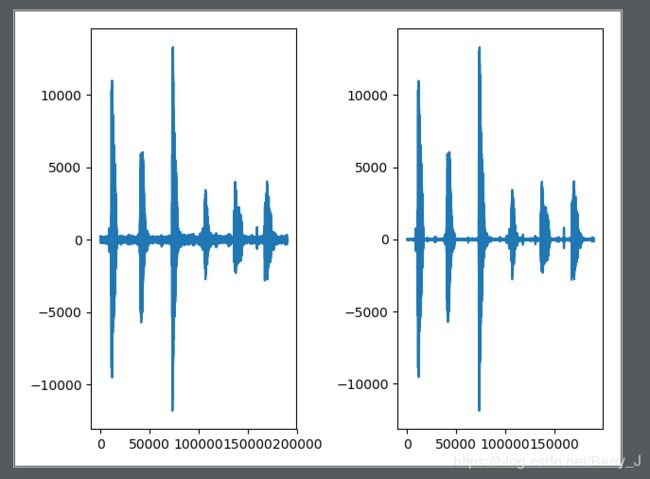- 数字信号处理之 快速傅里叶变换(FFT)
墨痕_777
信号处理算法
文章目录快速傅里叶变换(FFT)一、直接计算DFT的问题和改善DFT运算效率的基本途径直接计算DFT的问题改善DFT运算效率的基本途径二、按时间抽取(DIT)的FFT算法(库利-图基算法)算法原理按时间抽取的FFT算法与直接计算DFT运算量的比较按时间抽取的FFT算法的特点按时间抽取的FFT算法的若干变体三、按频率抽取(DIF)的FFT算法(桑德-图基算法)算法原理时间抽取算法与频率抽取算法的比较
- QP 问题(Quadratic Programming, 二次规划)
BineHello
算法人工智能强化学习自动驾驶线性代数
QP问题(QuadraticProgramming,二次规划)是什么?QP(QuadraticProgramming,二次规划)是一类优化问题,其中目标函数是二次型函数,约束条件可以是线性等式或不等式。QP问题是线性规划(LP,LinearProgramming)的扩展形式,广泛应用于最优控制、机器学习、金融优化、信号处理等领域。一、QP问题的数学定义标准形式的QP问题如下:minx12xTQx
- 信号处理应用:电力系统中的信号处理_(10).电力系统信号处理中的现代滤波器设计
kkchenkx
信号处理技术仿真模拟信号处理大数据
电力系统信号处理中的现代滤波器设计1.引言在电力系统中,信号处理技术被广泛应用于监测、保护、控制和优化等多个方面。现代滤波器设计是信号处理技术中的重要组成部分,它能够有效地去除噪声、提取有用信号、提高信号质量,从而确保电力系统的稳定运行和高效性能。本节将介绍现代滤波器设计的基本概念、分类、设计方法及其在电力系统中的应用。2.滤波器的基本概念滤波器是一种信号处理设备,用于从输入信号中提取或抑制特定频
- 信号处理应用:控制系统中的信号处理_(2).控制系统的数学建模
kkchenkx
信号处理技术仿真模拟数学建模信号处理
控制系统的数学建模在控制系统的设计和分析中,数学建模是基础且至关重要的步骤。数学模型可以描述系统的动态行为,帮助我们理解和预测系统的响应。本节将详细介绍控制系统的数学建模方法,包括传递函数、状态空间模型和频域分析。1.传递函数传递函数是一种常用的数学模型,用于描述线性时不变(LTI)系统的输入输出关系。传递函数是在复频域(s域)中表示的,可以方便地进行系统的分析和设计。1.1定义传递函数定义为系统
- 信号处理应用:电力系统中的信号处理_(9).基于电力系统信号的数据挖掘技术
kkchenkx
信号处理技术仿真模拟信号处理数据挖掘人工智能
基于电力系统信号的数据挖掘技术1.引言电力系统中的信号处理是一个重要的研究领域,涉及电力系统的监测、故障诊断、状态评估等多个方面。随着大数据和人工智能技术的发展,数据挖掘技术在电力系统中的应用越来越广泛。本节将介绍如何利用数据挖掘技术对电力系统中的信号进行处理和分析,以提高系统的可靠性和效率。2.电力系统中的信号类型在电力系统中,信号可以分为多种类型,包括:电压信号:反映电力系统的电压水平,用于检
- 高速PCB设计(布局规划)
四代目 水门
高速PCB设计学习笔记fpga开发嵌入式硬件
高速PCB设计笔记以下基于用户提供的结构设计流程与高速PCB设计规范整合,结合行业最佳实践与信号完整性原则,总结关键设计要点:一、设计规划与功能梳理1.核心功能模块划分项目类型识别:明确单板类型(数字/模拟/射频/电源等),划分输入/输出模块、电源模块、信号处理模块、时钟/复位模块。核心器件定位:聚焦FPGA、DSP、高速ADC/DAC、时钟芯片等,优先布局以缩短关键信号路径。2.设计要求确认电源
- 【扩频通信】 QPSK和DSSS扩频通信(先扩频 后调制 误码率对比)【含Matlab源码 4549期】
Matlab仿真科研站
matlab
欢迎来到Matlab仿真科研站博客之家✅博主简介:热爱科研的Matlab仿真开发者,修心和技术同步精进,Matlab项目合作可私信。个人主页:Matlab仿真科研站博客之家代码获取方式:扫描文章底部QQ二维码⛳️座右铭:行百里者,半于九十;路漫漫其修远兮,吾将上下而求索。⛄更多Matlab信号处理(仿真科研站版)仿真内容点击Matlab信号处理(仿真科研站版)⛄一、扩频通信系统简介**扩频通信的基
- 【扩频通信】QPSK和DSSS扩频通信(先扩频 后调制 误码率对比)【含Matlab源码 4549期】
Matlab研究室
matlab
欢迎来到Matlab研究室博客之家✅博主简介:热爱科研的Matlab仿真开发者,修心和技术同步精进,Matlab项目合作可私信。个人主页:Matlab研究室代码获取方式:Matlab研究室学习之路—代码获取方式(包运行)⛳️座右铭:行百里者,半于九十;路漫漫其修远兮,吾将上下而求索。更多Matlab信号处理仿真内容点击Matlab信号处理(视频版)
- # 附录3 傅立叶分析应用
技术与健康
Excel数据分析与模拟决策傅立叶分析线性回归excel数据分析
傅立叶分析不仅限于理论研究,它在金融、信号处理、环境科学、医疗、机械维护等众多领域具有广泛的实际应用。在Excel中,傅立叶分析工具为用户提供了简单而高效的频域分析手段,帮助发现数据中的周期性特征,识别异常频率,从而做出有针对性的决策。1.金融市场分析:周期性趋势发现应用背景:金融市场数据,如股票价格、指数、交易量等,往往包含周期性波动。投资者和分析师可以利用傅立叶分析来识别这些周期,帮助预测市场
- 【17】 傅立叶分析
技术与健康
Excel数据分析与模拟决策线性回归excel数据分析
傅立叶分析(FourierAnalysis)是Excel数据分析工具库中的一种方法,用于将时间序列数据分解为不同频率的正弦波(sinusoidalcomponents)。它特别适用于分析周期性数据或信号处理,帮助用户发现数据中的周期性模式、频率成分及其幅度。傅立叶变换将复杂的时间序列数据转化为频域数据,这意味着它能把数据分解为不同频率的波形,这在物理、金融市场、工程信号处理中有广泛的应用。傅立叶分
- 基于Simulink的单个PWM信号的傅里叶分析&特定谐波抑制
科研辅导帮
傅立叶分析
✅作者简介:热爱科研的Matlab仿真开发者,修心和技术同步精进,代码获取、论文复现及科研仿真合作可私信。个人主页:Matlab科研工作室个人信条:格物致知。更多Matlab完整代码及仿真定制内容点击智能优化算法神经网络预测雷达通信无线传感器电力系统信号处理
- 基于 MATLAB仿真卡尔曼滤波原理及应用
资深码侬
matlabmatlab开发语言
基于MATLAB仿真卡尔曼滤波原理及应用简介:《卡尔曼滤波原理及应用:MATLAB仿真》主要介绍数字信号处理中的卡尔曼(Kalman)滤波算法及在相关领域应用。《卡尔曼滤波原理及应用:MATLAB仿真》共7章。第1章为绪论。第2章介绍MATLAB算法仿真的编程基础。第3章介绍线性Kalman滤波。第4章讨论扩展Kalman滤波,并介绍其在目标跟踪和制导领域的应用和算法仿真。第5章介绍UKF滤波算法
- 高速图像采集卡设计原理图: 613-VU9P信号处理板卡
大嘴教授
信号处理fpga开发
基于6UVPXC6678+XCVU9P的信号处理板卡一、板卡概述板卡基于6UVPX标准结构,包含一个C6678DSP芯片,一个XCVU9P高性能FPGA,双路HPCFMC。二、处理板技术指标•DSP处理器采用TI8核处理器TMS320C6678;•DSP外挂一组64bitDDR3颗粒,总容量2GB,数据速率1333Mb/s;•DSP采用EMIF16NorFlash加载模式,NorFlash容量32
- 小波包阈值去噪方法
yyytucj
人工智能算法
针对小波包去噪对含强白噪声的信号处理效果不理想问题,提出了基于互相关分析优化的VMD-小波包阈值去噪方法。该方法融合了VMD和小波包去噪的优势,通过VMD把含噪信号分解成若干个模态分量,根据互相关分析提出的临界相关系数从所有模态分量中搜寻极优模态分量,之后利用小波包阈值去噪对极优模态分量进行处理。实验结果表明,该方法对含强白噪声的信号去噪效果具有优势,能够保全信号的有效分量,克服了传统VMD去噪的
- 信号处理基础:信号的时域和频域分析_(9).傅里叶变换
kkchenkx
信号处理技术仿真模拟信号处理
傅里叶变换引言傅里叶变换是一种将信号从时域转换到频域的数学工具。通过傅里叶变换,可以将复杂的时域信号分解为一系列简单的基本频率分量,这对于信号的分析、处理和设计具有重要意义。傅里叶变换在信号处理领域有着广泛的应用,包括滤波、频谱分析、通信系统设计等。傅里叶级数连续时间傅里叶级数(CTFS)连续时间傅里叶级数(Continuous-TimeFourierSeries,CTFS)是一种将周期性连续时间
- Linux----进程间的通信
weixin_51790712
linux运维服务器
进程间通信之信号:信号--软中断中断信号---中断源中断(信号)处理程序---负责对该中断(信号)做出反应的//信号处理函数的注册函数#includetypedefvoid(*sighandler_t)(int);sighandler_tsignal(intsignum,sighandler_thandler);功能:给signum信号设置一个信号处理函数参数:@signum要处理的信号@hand
- 矩阵理论与应用:矩阵范数
AI大模型应用之禅
DeepSeekR1&AI大模型与大数据计算科学神经计算深度学习神经网络大数据人工智能大型语言模型AIAGILLMJavaPython架构设计AgentRPA
矩阵理论与应用:矩阵范数1.背景介绍1.1问题的由来矩阵范数在数学、工程、物理以及计算机科学等多个领域都有着广泛的应用。它提供了一种衡量矩阵大小或者矩阵变换的影响程度的方法。矩阵范数的概念对于理解矩阵的性质、数值稳定性、以及在机器学习和信号处理中的矩阵操作至关重要。例如,在数值线性代数中,矩阵范数用于评估算法的收敛性、误差估计和稳定性。在信号处理中,它可以用来评估信号的失真程度或者噪声的影响。1.
- 单稳态多谐振荡器的综合设计与应用文档
胡说先森
本文还有配套的精品资源,点击获取简介:单稳态多谐振荡器是一种电子电路,以其产生固定长度脉冲的独特功能,在信号处理、定时和脉冲整形等领域得到广泛应用。本文档详细介绍了单稳态多谐振荡器的工作原理、电路设计、特性及实际应用。电路由两个反相器和RC网络组成,工作原理包含触发、稳态和复位三个阶段。其特性如脉冲宽度可调、输入脉冲影响小、脉冲形状的稳定性等决定了在脉冲整形、定时器、延时、分频和边沿检测等应用中的
- 【数学建模】基于matlab模拟无人车泊车问题仿真
matlab科研助手
数学建模matlab开发语言
✅作者简介:热爱科研的Matlab仿真开发者,修心和技术同步精进,代码获取、论文复现及科研仿真合作可私信。个人主页:Matlab科研工作室个人信条:格物致知。更多Matlab完整代码及仿真定制内容点击智能优化算法神经网络预测雷达通信无线传感器电力系统信号处理图像处理路径规划元胞自动机无人机物理应用机器学习内容介绍无人驾驶汽车技术近年来取得了飞速发展,其中自动泊车功能是关键技术之一。本文将重点讨论无
- 【ECG心电信号】基于matlab GUI心电图数据计算心率(含判断)【含Matlab源码 11080期】
Matlab仿真科研站
matlab
欢迎来到Matlab仿真科研站博客之家✅博主简介:热爱科研的Matlab仿真开发者,修心和技术同步精进,Matlab项目合作扫描文章底部二维码。个人主页:Matlab仿真科研站博客之家代码获取方式:扫描文章底部QQ二维码⛳️座右铭:行百里者,半于九十;路漫漫其修远兮,吾将上下而求索。⛄更多Matlab信号处理(仿真科研站版)仿真内容点击Matlab信号处理(仿真科研站版)⛄一、心电图数据计算心率(
- MATLAB环境下从信号中去除60Hz工频干扰噪声
Luis Li 的猫猫
matlab开发语言
从信号中去除60Hz工频干扰噪声是信号处理中的常见需求(尤其在生物医学、工业传感等领域)。1.工频干扰特性分析来源:电力线耦合(如50/60Hz交流电)、设备接地不良、电磁辐射。典型表现:信号频谱中在60Hz附近出现尖峰(可能伴随谐波,如120Hz、180Hz)。危害:掩盖真实信号特征(如ECG中的QRS波、EEG中的脑电节律)。2.硬件预处理(降低干扰根源)屏蔽与接地:使用屏蔽电缆和法拉第笼减少
- 基于FPGA的数字信号处理(18)--半加器和全加器
孤独的单刀
基于FPGA的数字信号处理fpga开发信号处理Verilog入门定点数Xilinx浮点数DSP
目录1、前言2、半加器3、全加器4、用半加器实现全加器文章总目录点这里:《基于FPGA的数字信号处理》专栏的导航与说明1、前言在数字系统中,加法运算是最常见的算术运算,同时它也是进行各种复杂运算的基础。2、半加器最简单的加法器叫做半加器(HalfAdder),它将2个输入1bit的数据相加,输出一个2bits的和,和的范围为0~2(10进制)。和的高位也被称为进位(Carry),和的低位则通常被直
- 西工大航海学院,新一代电子信息复试资料911电子版!资料全
weixin_aaa722509
电子信息复试资料西工大航海学院
西工大航海学院已上岸,出新一代电子信息复试资料911(电子版!资料全),西工大911重点题型资料资料完整齐全,复习学习用这套足够,通过无忧!点此获取资料:https://www.yiwanma.com/product/view1679.html911大纲与真题信号检测与估值知识点总结数字信号处理本校PPT数字信号处理真题和本校期末考试题数字信号处理知识点与问答题纸质资料拍照汇总通信原理PPT通信原
- 第四天----线程
唯瑞主义
嵌入式应用开发linucc
线程控制Linux中的线程是指轻量级的执行单元,相比于进程,具有以下特点:(1)进程(Process)是正在执行的程序的实例。每个进程都有自己的地址空间、代码段、数据段和打开的文件描述符等资源。线程(Thread)是进程内的一个执行单元,它共享相同的地址空间和其他资源,包括文件描述符、信号处理等,但每个线程都有自己的栈空间。(2)由于共享地址空间和数据段,同一进程的多线程之间进行数据交换比进程间通
- 爱普生VG-4231CE压控晶体振荡器
压电侠123
晶体振荡器晶振晶体新媒体运营
随着科技的飞速发展,各类电子设备对于稳定且精确的信号需求越来越高。爱普生(EPSON)压控晶振VG-4231CE,它能提供稳定的工作环境和高精度信号,助您轻松应对各种高难度信号处理任务。VG-4231CE参数及特点:宽频率范围:3MHz~60MHz,能够满足各种数字、模拟、射频等信号的需求。电源电压:3.3V(PSCM/CSCM);2.8V(PSBM/CSBM);1.8V(PQEM/CQEM),可
- 基于STM32的智能健康监测手环系统
STM32发烧友
stm32嵌入式硬件单片机
1.引言传统健康监测设备存在功能单一、数据孤立等问题,难以满足现代健康管理的个性化需求。本文设计了一款基于STM32的智能健康监测手环系统,通过多生理参数采集、AI健康评估与云端协同技术,实现人体健康状态的实时监测与预警,推动主动健康管理模式的普及。2.系统设计2.1硬件设计主控芯片:STM32L476RG,超低功耗设计(7天)无线充电(Qi标准,2小时充满)2.2软件架构生理信号处理:小波变换消
- 彻底理解数字图像处理中的卷积-以Sobel算子为例
守得云开现月明
图像处理图像处理
链接:原文出处作者:FreeBlues概述卷积在信号处理领域有极其广泛的应用,也有严格的物理和数学定义.本文只讨论卷积在数字图像处理中的应用.在数字图像处理中,有一种基本的处理方法:线性滤波.待处理的平面数字图像可被看做一个大矩阵,图像的每个像素对应着矩阵的每个元素,假设我们平面的分辨率是1024*768,那么对应的大矩阵的行数=1024,列数=768.用于滤波的是一个滤波器小矩阵(也叫卷积核),
- IO进程 day07
李倚墨
Linux阶段四:IO进程IO进程c语言
IO进程day0711.进程间通信机制11.3.有名管道无名管道和有名管道的区别11.4.信号信号的概念信号的分类特殊信号信号的处理方式信号产生的方式函数接口kill&raise-发送信号alarm-定时signal-信号处理11.5.共享内存概念特点流程ftokshmgetshmatshmdtshmctl操作命令11.进程间通信机制11.3.有名管道无名管道和有名管道的区别 无名管道有名管道应用
- linux/C++ 进程线程
takkto
linuxc++运维
linux/C++进程线程文章目录linux/C++进程线程进程创建进程:跳转执行另一个程序僵尸进程命令与进程树孤儿进程进程间通信匿名管道(Pipe)有名管道(FIFO)共享内存消息队列signal信号基本概念使用方法信号类型处理动作含义信号处理方法发送信号多进程和信号调用可执行程序进程终止5种正常终止进程的方法3种异常终止进程的方法return和三种exit之间的区别进程的终止函数线程创建线程等
- hi3516cv610的isp调试专业名词
张海森-168820
音视频
hi3516cv610的isp调试专业名词isp的drc模块ISP(图像信号处理)中的DRC(动态范围压缩)模块1.什么是DRC(DynamicRangeCompression)?DRC(DynamicRangeCompression,动态范围压缩)是一种图像处理技术,主要用于增强图像的细节,尤其是在高对比度场景下。例如:•在强光与暗部同时存在的场景中(如逆光),DRC通过压缩亮部和提升暗部,使整
- SQL的各种连接查询
xieke90
UNION ALLUNION外连接内连接JOIN
一、内连接
概念:内连接就是使用比较运算符根据每个表共有的列的值匹配两个表中的行。
内连接(join 或者inner join )
SQL语法:
select * fron
- java编程思想--复用类
百合不是茶
java继承代理组合final类
复用类看着标题都不知道是什么,再加上java编程思想翻译的比价难懂,所以知道现在才看这本软件界的奇书
一:组合语法:就是将对象的引用放到新类中即可
代码:
package com.wj.reuse;
/**
*
* @author Administrator 组
- [开源与生态系统]国产CPU的生态系统
comsci
cpu
计算机要从娃娃抓起...而孩子最喜欢玩游戏....
要让国产CPU在国内市场形成自己的生态系统和产业链,国家和企业就不能够忘记游戏这个非常关键的环节....
投入一些资金和资源,人力和政策,让游
- JVM内存区域划分Eden Space、Survivor Space、Tenured Gen,Perm Gen解释
商人shang
jvm内存
jvm区域总体分两类,heap区和非heap区。heap区又分:Eden Space(伊甸园)、Survivor Space(幸存者区)、Tenured Gen(老年代-养老区)。 非heap区又分:Code Cache(代码缓存区)、Perm Gen(永久代)、Jvm Stack(java虚拟机栈)、Local Method Statck(本地方法栈)。
HotSpot虚拟机GC算法采用分代收
- 页面上调用 QQ
oloz
qq
<A href="tencent://message/?uin=707321921&Site=有事Q我&Menu=yes">
<img style="border:0px;" src=http://wpa.qq.com/pa?p=1:707321921:1></a>
- 一些问题
文强chu
问题
1.eclipse 导出 doc 出现“The Javadoc command does not exist.” javadoc command 选择 jdk/bin/javadoc.exe 2.tomcate 配置 web 项目 .....
SQL:3.mysql * 必须得放前面 否则 select&nbs
- 生活没有安全感
小桔子
生活孤独安全感
圈子好小,身边朋友没几个,交心的更是少之又少。在深圳,除了男朋友,没几个亲密的人。不知不觉男朋友成了唯一的依靠,毫不夸张的说,业余生活的全部。现在感情好,也很幸福的。但是说不准难免人心会变嘛,不发生什么大家都乐融融,发生什么很难处理。我想说如果不幸被分手(无论原因如何),生活难免变化很大,在深圳,我没交心的朋友。明
- php 基础语法
aichenglong
php 基本语法
1 .1 php变量必须以$开头
<?php
$a=” b”;
echo
?>
1 .2 php基本数据库类型 Integer float/double Boolean string
1 .3 复合数据类型 数组array和对象 object
1 .4 特殊数据类型 null 资源类型(resource) $co
- mybatis tools 配置详解
AILIKES
mybatis
MyBatis Generator中文文档
MyBatis Generator中文文档地址:
http://generator.sturgeon.mopaas.com/
该中文文档由于尽可能和原文内容一致,所以有些地方如果不熟悉,看中文版的文档的也会有一定的障碍,所以本章根据该中文文档以及实际应用,使用通俗的语言来讲解详细的配置。
本文使用Markdown进行编辑,但是博客显示效
- 继承与多态的探讨
百合不是茶
JAVA面向对象 继承 对象
继承 extends 多态
继承是面向对象最经常使用的特征之一:继承语法是通过继承发、基类的域和方法 //继承就是从现有的类中生成一个新的类,这个新类拥有现有类的所有extends是使用继承的关键字:
在A类中定义属性和方法;
class A{
//定义属性
int age;
//定义方法
public void go
- JS的undefined与null的实例
bijian1013
JavaScriptJavaScript
<form name="theform" id="theform">
</form>
<script language="javascript">
var a
alert(typeof(b)); //这里提示undefined
if(theform.datas
- TDD实践(一)
bijian1013
java敏捷TDD
一.TDD概述
TDD:测试驱动开发,它的基本思想就是在开发功能代码之前,先编写测试代码。也就是说在明确要开发某个功能后,首先思考如何对这个功能进行测试,并完成测试代码的编写,然后编写相关的代码满足这些测试用例。然后循环进行添加其他功能,直到完全部功能的开发。
- [Maven学习笔记十]Maven Profile与资源文件过滤器
bit1129
maven
什么是Maven Profile
Maven Profile的含义是针对编译打包环境和编译打包目的配置定制,可以在不同的环境上选择相应的配置,例如DB信息,可以根据是为开发环境编译打包,还是为生产环境编译打包,动态的选择正确的DB配置信息
Profile的激活机制
1.Profile可以手工激活,比如在Intellij Idea的Maven Project视图中可以选择一个P
- 【Hive八】Hive用户自定义生成表函数(UDTF)
bit1129
hive
1. 什么是UDTF
UDTF,是User Defined Table-Generating Functions,一眼看上去,貌似是用户自定义生成表函数,这个生成表不应该理解为生成了一个HQL Table, 貌似更应该理解为生成了类似关系表的二维行数据集
2. 如何实现UDTF
继承org.apache.hadoop.hive.ql.udf.generic
- tfs restful api 加auth 2.0认计
ronin47
目前思考如何给tfs的ngx-tfs api增加安全性。有如下两点:
一是基于客户端的ip设置。这个比较容易实现。
二是基于OAuth2.0认证,这个需要lua,实现起来相对于一来说,有些难度。
现在重点介绍第二种方法实现思路。
前言:我们使用Nginx的Lua中间件建立了OAuth2认证和授权层。如果你也有此打算,阅读下面的文档,实现自动化并获得收益。SeatGe
- jdk环境变量配置
byalias
javajdk
进行java开发,首先要安装jdk,安装了jdk后还要进行环境变量配置:
1、下载jdk(http://java.sun.com/javase/downloads/index.jsp),我下载的版本是:jdk-7u79-windows-x64.exe
2、安装jdk-7u79-windows-x64.exe
3、配置环境变量:右击"计算机"-->&quo
- 《代码大全》表驱动法-Table Driven Approach-2
bylijinnan
java
package com.ljn.base;
import java.io.BufferedReader;
import java.io.FileInputStream;
import java.io.InputStreamReader;
import java.util.ArrayList;
import java.util.Collections;
import java.uti
- SQL 数值四舍五入 小数点后保留2位
chicony
四舍五入
1.round() 函数是四舍五入用,第一个参数是我们要被操作的数据,第二个参数是设置我们四舍五入之后小数点后显示几位。
2.numeric 函数的2个参数,第一个表示数据长度,第二个参数表示小数点后位数。
例如:
select cast(round(12.5,2) as numeric(5,2))
- c++运算符重载
CrazyMizzz
C++
一、加+,减-,乘*,除/ 的运算符重载
Rational operator*(const Rational &x) const{
return Rational(x.a * this->a);
}
在这里只写乘法的,加减除的写法类似
二、<<输出,>>输入的运算符重载
&nb
- hive DDL语法汇总
daizj
hive修改列DDL修改表
hive DDL语法汇总
1、对表重命名
hive> ALTER TABLE table_name RENAME TO new_table_name;
2、修改表备注
hive> ALTER TABLE table_name SET TBLPROPERTIES ('comment' = new_comm
- jbox使用说明
dcj3sjt126com
Web
参考网址:http://www.kudystudio.com/jbox/jbox-demo.html jBox v2.3 beta [
点击下载]
技术交流QQGroup:172543951 100521167
[2011-11-11] jBox v2.3 正式版
- [调整&修复] IE6下有iframe或页面有active、applet控件
- UISegmentedControl 开发笔记
dcj3sjt126com
// typedef NS_ENUM(NSInteger, UISegmentedControlStyle) {
// UISegmentedControlStylePlain, // large plain
&
- Slick生成表映射文件
ekian
scala
Scala添加SLICK进行数据库操作,需在sbt文件上添加slick-codegen包
"com.typesafe.slick" %% "slick-codegen" % slickVersion
因为我是连接SQL Server数据库,还需添加slick-extensions,jtds包
"com.typesa
- ES-TEST
gengzg
test
package com.MarkNum;
import java.io.IOException;
import java.util.Date;
import java.util.HashMap;
import java.util.Map;
import javax.servlet.ServletException;
import javax.servlet.annotation
- 为何外键不再推荐使用
hugh.wang
mysqlDB
表的关联,是一种逻辑关系,并不需要进行物理上的“硬关联”,而且你所期望的关联,其实只是其数据上存在一定的联系而已,而这种联系实际上是在设计之初就定义好的固有逻辑。
在业务代码中实现的时候,只要按照设计之初的这种固有关联逻辑来处理数据即可,并不需要在数据库层面进行“硬关联”,因为在数据库层面通过使用外键的方式进行“硬关联”,会带来很多额外的资源消耗来进行一致性和完整性校验,即使很多时候我们并不
- 领域驱动设计
julyflame
VODAO设计模式DTOpo
概念:
VO(View Object):视图对象,用于展示层,它的作用是把某个指定页面(或组件)的所有数据封装起来。
DTO(Data Transfer Object):数据传输对象,这个概念来源于J2EE的设计模式,原来的目的是为了EJB的分布式应用提供粗粒度的数据实体,以减少分布式调用的次数,从而提高分布式调用的性能和降低网络负载,但在这里,我泛指用于展示层与服务层之间的数据传输对
- 单例设计模式
hm4123660
javaSingleton单例设计模式懒汉式饿汉式
单例模式是一种常用的软件设计模式。在它的核心结构中只包含一个被称为单例类的特殊类。通过单例模式可以保证系统中一个类只有一个实例而且该实例易于外界访问,从而方便对实例个数的控制并节约系统源。如果希望在系统中某个类的对象只能存在一个,单例模式是最好的解决方案。
&nb
- logback
zhb8015
loglogback
一、logback的介绍
Logback是由log4j创始人设计的又一个开源日志组件。logback当前分成三个模块:logback-core,logback- classic和logback-access。logback-core是其它两个模块的基础模块。logback-classic是log4j的一个 改良版本。此外logback-class
- 整合Kafka到Spark Streaming——代码示例和挑战
Stark_Summer
sparkstormzookeeperPARALLELISMprocessing
作者Michael G. Noll是瑞士的一位工程师和研究员,效力于Verisign,是Verisign实验室的大规模数据分析基础设施(基础Hadoop)的技术主管。本文,Michael详细的演示了如何将Kafka整合到Spark Streaming中。 期间, Michael还提到了将Kafka整合到 Spark Streaming中的一些现状,非常值得阅读,虽然有一些信息在Spark 1.2版
- spring-master-slave-commondao
王新春
DAOspringdataSourceslavemaster
互联网的web项目,都有个特点:请求的并发量高,其中请求最耗时的db操作,又是系统优化的重中之重。
为此,往往搭建 db的 一主多从库的 数据库架构。作为web的DAO层,要保证针对主库进行写操作,对多个从库进行读操作。当然在一些请求中,为了避免主从复制的延迟导致的数据不一致性,部分的读操作也要到主库上。(这种需求一般通过业务垂直分开,比如下单业务的代码所部署的机器,读去应该也要从主库读取数

